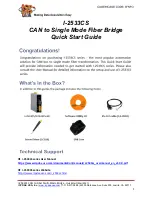
11.03
7 Configuring example
7.6 SI I/Os using fail-safe modules connected to PROFIBUS DP
© Siemens AG 2003 All Rights Reserved
SINUMERIK 840D/SIMODRIVE 611 digital SINUMERIK Safety Integrated (FBSI) - Edition 11.03
7-431
•
Input delay
In order to suppress coupled-in noise and disturbances, it is possible to
define a noise/disturbance pulse length (in ms) for all of the modules using
the input delay parameter. Noise/disturbance pulses from 0 ms up to the
set value are then suppressed.
•
Short-circuit test
The short-circuit test parameter activates the short-circuit detection
function for the module. This test only makes sense if a simple switch is
used, which is connected via two encoder supplies in the module (VS1,
VS2). In this context, each input terminal must be assigned a supply
voltage for the test (cf. Chapter: Connecting-up sensors and actuators ->
Electronic module 4/8 F-DI DC24 V PROFIsafe).
•
Encoder evaluation
In the example, all of the input sensors are connected through two-
channels (refer to Fig. 7-34). Therefore, the encoder evaluation is set to
2v2 evaluation for all 4 channel pairs.
•
Type of encoder connection
The type of encoder connection depends on the encoder design. For NC
and NO contact pairs (channels 0,4; channels 1,5; channels 3,7), the two-
channel sensor version must be set. On the other hand, for the exclusive
OR agreement button (one NC and one NO contact), the exclusive OR
sensor version should be specified.
•
Discrepancy time
The discrepancy time parameter is used to enter the monitoring time for
discrepancy analysis (only relevant for 2v2 analysis). If there is still a
difference between the two associated input signals after the discrepancy
time has expired, then this is detected as an error and signaled to the
master. This time should be orientated to the switching duration (both
channels) for the connected sensor.
Only one signal state is transferred to the master via the PROFIsafe
protocol. This means that an internal control crosswise data comparison
error, referred to two different input signal states, can no longer occur. The
discrepancy analysis is executed in a distributed fashion – this means that
the time should be selected to take this into account.
















































